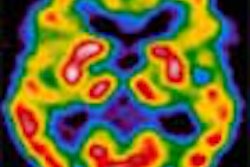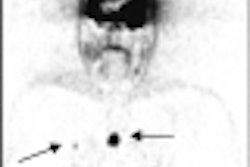Self-Study Program III, Nuclear Medicine Cardiology: Topic 5, Myocardial Perfusion Scintigraphy -- Technical Aspects by Elias H. Botvinick, ed.
Society of Nuclear Medicine, Reston, VA, 2001, $85 for SNM members; $119 for non-members.
This well-written self-study program covers the technical aspects of nuclear cardiology. A highlight of the 218-page book is the section on standard software display programs, which explains a pair of topics that many texts barely touch on, or do not mention at all: circumferential profiles and polar maps.
The section is a must-read for anyone who wants to understand how to view or explain a profile or polar map. Current software and graphics capabilities are also reviewed. The figures, tables, and graphics in this text are exceptional and allow the reader to correlate what is being read with visual images.
Nuclear Medicine Cardiology begins with an overview of coronary blood flow, including definitions, units of measure, basic physiology, pathophysiology, and metabolism.
Perfusion radiotracers used for cardiac imaging are given in-depth coverage, including localization, kinetics, and characteristics. The authors also cover the advantages and disadvantages of technetium-99m-based perfusion agents compared to thallium-201.
There are outlines and practical comparisons of imaging protocols. Included are protocols for Thallium-201, Sestamibi, Tetrofosmin, and dual-isotope methods. Planar and SPECT image acquisition techniques are briefly mentioned.
The book covers image processing and quantitation from simple image background subtraction to smoothing, interpolation, edge enhancement, image contrast transformation, visual and quantitative image analysis, and sources of error and quality control.
One section of the text takes an in-depth look at SPECT processing and the principles of display. It includes valuable information on axis selection, normal databases, circumferential profiles, polar maps, cine, color tables, gated processing, image enhancement, contrast, and windowing.
SPECT artifacts, major buzzwords in nuclear medicine this year, are also discussed in detail. The authors are to be commended for their explanation of technically demanding SPECT imaging and quality control in both the acquisition and processing of nuclear medicine studies. The remainder of this section focuses on the recognition, causes and corrections for some of the most commonly seen SPECT artifacts. FDG imaging with conventional cameras, and current state of the technology, is also discussed briefly.
The final section of the book includes 32 multiple-choice questions, and case examples with answers and critiques, bringing to an end a very informative and useful read.
This text is a collaborative collection of information. I recommend it strongly for anyone who wishes to learn or better understand the technical aspects of nuclear cardiology.
By Keri WilliamsAuntMinnie.com contributing writer
December 6, 2001
Keri Williams is a registered radiologic technologists and a certified nuclear medicine technologist. She is the supervisor of nuclear medicine at Craven Regional Medical Center in New Bern, NC.
If you are interested in reviewing a book, let us know at [email protected].
The opinions expressed in this review are those of the author, and do not necessarily reflect the views of AuntMinnie.com.
Copyright © 2001 AuntMinnie.com



















